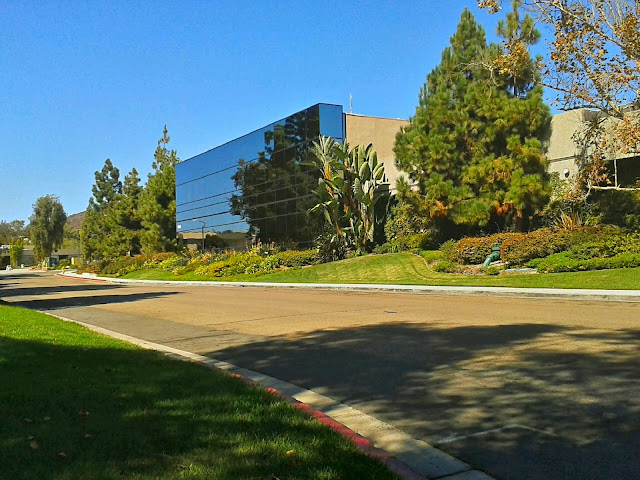I am in a new place thousands of miles from home, late in my life, with a clear view of both places ... sepia memories of one, flickering momentary impressions of the other.We shall not cease from explorationAnd the end of all our exploringWill be to arrive where we startedAnd know the place for the first time.T. S. Eliot, Four Quartets, "Little Gidding," V, 26-29
Above all, one is always immersed in people, people are the proper country of people, and the natural environment of people. So what stands out, most, are the little inexplicable differences in how people seem to think in both places.
In this, I'm going to be crashing through a forest of sprouting platitudes. I'm not giving up my membership of the People's Liberation Front of Judea, but am interested in why the Romans had power, big highways, and a system of production which seems to favour creative pursuit of interesting projects. Forgive my generalisations, in the sure and certain knowledge that all generalisation is bad, always.
As a general observation, just to work into the topic: people in Southern California are a lot nicer than people in Sydney. More polite, more considerate, easier-going on the roads and in person, less censorious and judgemental. I get the impression that a lot of this arises from their internal narrative, which posits their locus of control inside the narrator and not in some always-absent all-seeing all-judging omniscient third person colonial administration. I'm not saying the narrative is accurate, just that it motivates people to behave differently. Examples abound, just ask me.
Anyway, I want to talk about the world of work. I've been a contractor for more than 30 years, and have met more than my fair share of managers in technical realms. In all that time, out of the hundreds, I've met no more than a handful who were any good at all. Part of that is down to the corporate culture in which they operated, part of it is the nature of the kind of person selected for that role, part is what motivates them to undertake that role.
I want to think and talk about what is different here, and why I think it has to do with something broader in our respective cultures, and what that is. "History," is what I'm essaying at the moment as the root cause of the differences.
Checking my privilege for a moment: I'm a white boy working in a field of ideas. I'm not talking about the experiences of the guys who stack supermarket shelves, or take my money in the local petrol station. My observations arise from the privilege I've always had, to be working with my mind and not my hands. I spent a week working on bricks, and apart from the pain, and the fact that my boss was a fan of Bertrand Russell, I wasn't very good at it. It seemed like toil, and toil is stupid.
"Each person is history and a project," I think Sartre said that. I don't think that is the case, though, in Oz technical management, where the existential truth is "Each unit of production is a time-sheet and a procedure." This cartoon-distinction seems to explain much of what I see as the difference between Oz and SoCal.
It's not that there are no timesheets here, or people aren't accountable, no. It's that the orientation is toward something which does (or may) produce a result. There is procedure, but it is always in the service of outcome, not the other way around.
Why? I would say because there is a narrative belief in outcome. Yank internal narratives always have a happy ending, the good guys get the girl, the bad guys their come-uppance. Even their high literature has endings ... Holden Caulfield discovers that everything goes 'round and 'round, Gatsby fails, but the narrator gets to moralise, Tom Joad will always be there.
Oz, I always come back to Voss. Man organises a venture, man heads off into desert, man wanders helplessly lost, man becomes part of the landscape. All the best Oz lit is about despair. All the paintings are lost children, or Ned Kelly as a postbox, with the bush peeking out through the slit. No one goes out back: that's that.
What we have is otherness, and estrangement from the real source of power. And it's because we were a slave colony. There was never a point in striking out alone, or with a small group ... you'd end up dead, and cannibalising your companions, not end up having a state named after you. Every time a bunch of colonial Americans struck out for new places, they found a richer and better place (I explicitly except Utah from this.) Every time explorers in Oz did the same, they ended up with "Dig" carved into a tree. And the destinations in Oz: they always promised so richly and delivered only sand and bleached bones.
An internal locus of control, and a goal worth winning. These are the first differences.
The second difference is the subjective narrative role of disruption. The yanks had the Boston tea party, which they invest with values like casting off the yoke of oppression (although of course it was not just that) and with clearing a space for improvement. The only truly successful uprising we ever had was the Rum Rebellion, which merely served to enrich the already wealthy, further oppress the already enslaved.
Disruption to structure and established process can be seen to have positive outcomes in Unistater narrative, but not in Oz. That's the next difference. Perhaps it's a difference in time scale, as in the long run we are all dead, Ozymandius and all that stone.
What I have found, and I can't say too much right now, is that working here is good. Much better than Oz. Here, I feel like what I do has value, what I'm good at has inherent merit, and my issues and concerns, my itches, are not merely the annoying ravings of a guy who's too lazy to fill in his timesheet, and get to work before 9am.
I dare to think that's because I found a place which shares my values, and so can be happy and among mental kin. Shame it's so far from home.
I haven't changed. I just changed where I plug in my laptop, and with whom I associate in daylight hours. Whether this is an Ugly Duckling story, or a Flowers for Algernon, time will tell.
Current sound track: Steely Dan, Aja. Some guys moved from NYC to LA because the quality of musicianship was so much higher in LA, and proceeded to do an album of songs about homesickness for NYC. Here's the story of its making ... a striving for perfection and realised vision in a context of alienation. My kind of narrative!



